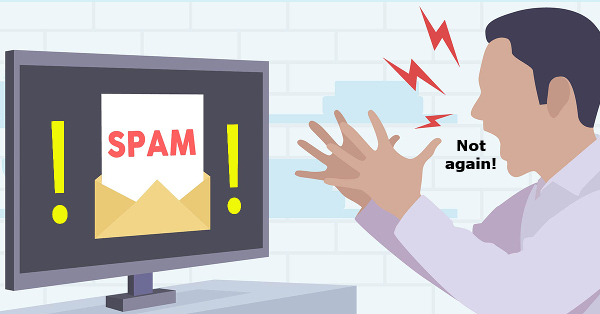 Fifteen years after the Internet world united to crack down on spam emails, we are all still struggling with overloaded inboxes. All that unwanted email continues to flood the internet, much of it targeted towards small businesses and the impact goes wider than you might think. Here’s the breakdown of how modern spam works and how it is hurting your business.
Fifteen years after the Internet world united to crack down on spam emails, we are all still struggling with overloaded inboxes. All that unwanted email continues to flood the internet, much of it targeted towards small businesses and the impact goes wider than you might think. Here’s the breakdown of how modern spam works and how it is hurting your business.
What is spam?
Spam is any unwanted message that lands in your email, comes via text, social media messaging or any other communication platform. It might be sent to your main business account, eg your ‘contact us’ email or directed to your employees. Most of the time, spam are annoying but relatively innocent messages from another business inviting you to buy, do or see something. They are newsletters, reminders, invitations, sales pitches, etc. You may know the sender and have a previous relationship with them or they might be a complete stranger. Spam may even be part of a cyber attack.
Why you are getting spammed.
Maybe you or your employee signed up for a newsletter or bought a raffle ticket to win a car. Perhaps you got onto the mailing list accidentally after enquiring about a product, not knowing that simply getting a brochure sent through would trigger a spam avalanche. Often there is fine print that says they’ll not only use your details to send you their marketing, but they’ll share your details with 3rd parties so that they can send you messages too. That single email address can be passed around the internet like wildfire and before you know it, you are buried under spam. Sometimes your details are found through a hacked website, like the recent LinkedIn leak. More often though, your email is simply collected by a computer ‘scraping’ the internet – scouring forums and websites for plain text or linked emails and selling them to spammers. It is easy to see now, how individual office employees receive an average of 120 emails daily, over half of which are spam!
More than annoying.
We all know spam is annoying but did you know it’s also consuming business resources? Your employees are spending hours each week sorting their email, assessing each one for relevance and deleting the spam. Your email servers along with your Internet links are getting clogged with the spam flowing into your business. Too often, legitimate emails from clients and customers get caught up and are accidentally deleted. Plus the temptation to read the more interesting spam emails and productivity drops to zero. On the other side of the business, your email server might be dedicating storage and processing power to spam emails, occasionally to the point where inboxes get full and real mail is bouncing out. While most spam is simply an unwanted newsletter or sale notice, there is also the risk that any links may be a cyber-attack in disguise. Remember one click can open the door to viruses, ransomware, phishing or other security issues which a hacker can then take advantage of.
How to stop the spam?
The 2003 Can Spam Act (a global set of anti-spam laws) requires all marketers to follow certain rules – like not adding people to mailing lists without permission and always including an ‘unsubscribe’ link. So make sure you’re not accidentally giving people permission to email you – check the fine print or privacy policy. Next, look for the unsubscribe link at the bottom of the email. Unfortunately, not all of them include the link, or they hide it somewhere impossible to see. The worst spammers take that ‘unsubscribe’ click to confirm that your email address is valid/active and then sell it on.
Take control of your email and talk to us about your anti-spam protections. Call us at 08 8326 4364 or
su*****@dp*********.au
.
